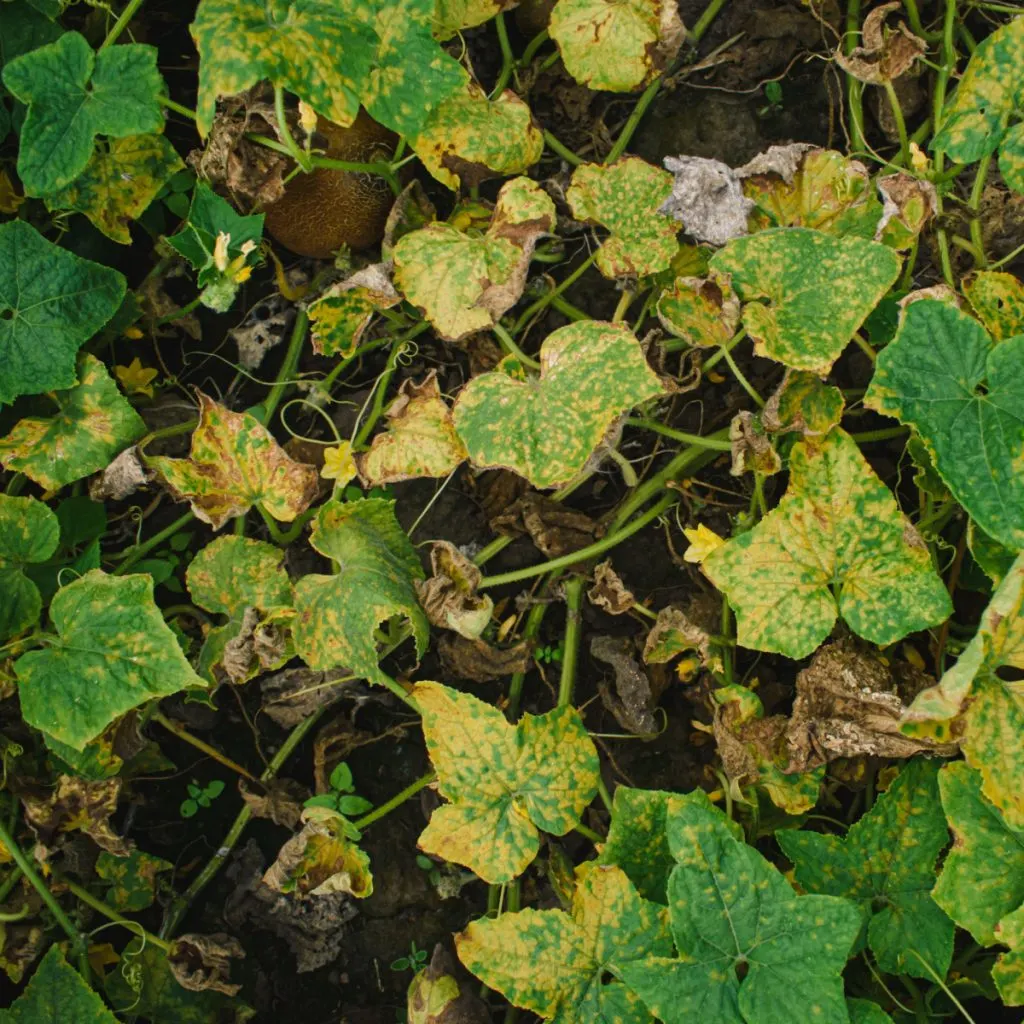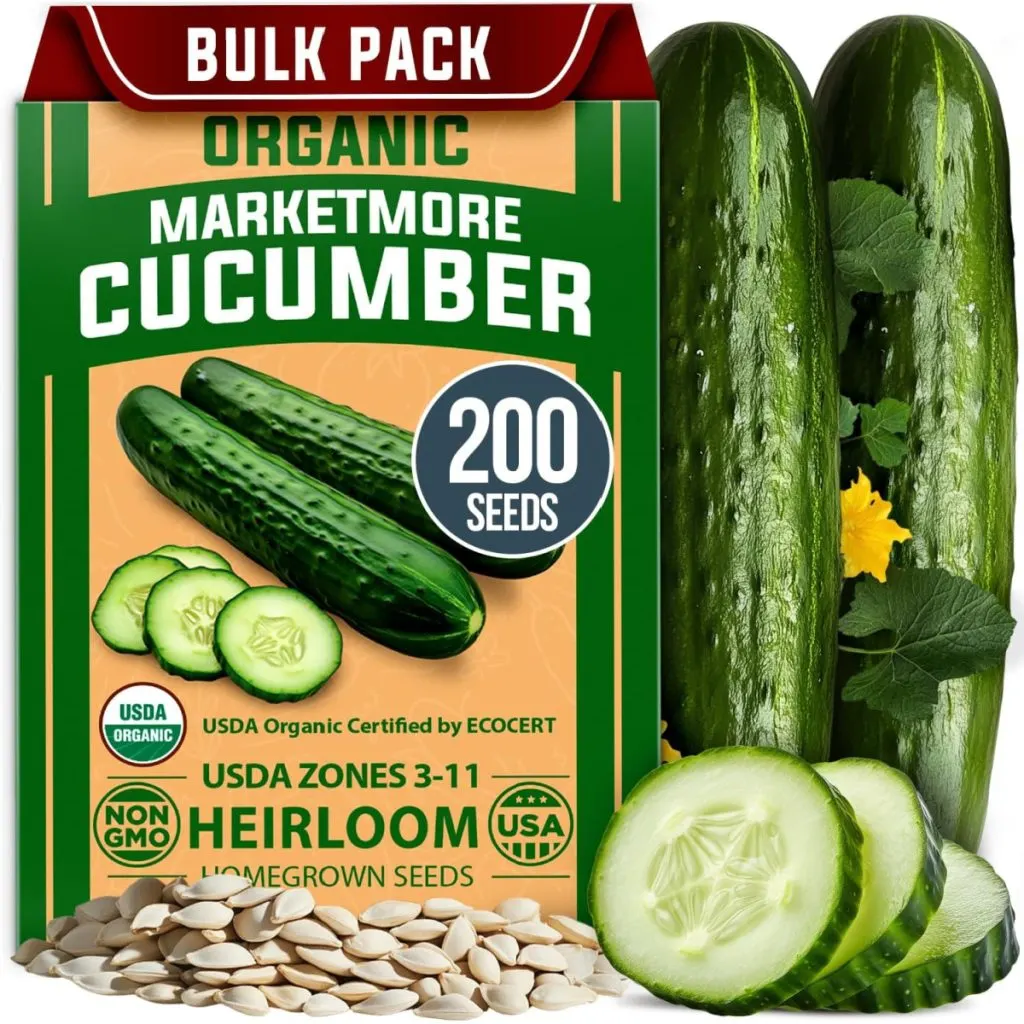It’s a question many gardeners ask every year – why do my cucumber plants seem to start off so strong, only to suddenly wilt, yellow, and die in the middle of summer?
One day they’re producing crisp green cucumbers, and the next, the leaves look tired, the vines are weak, and the harvest comes to a standstill. If this sounds familiar, you’re not alone. As it turns out, it’s one of the most common issues gardeners face when growing cucumbers.
Cucumber plants are notorious for fading out in the middle of the growing season. In fact, it happens to even the most experienced gardener’s plants. The good news is, not only is this a common occurrence – there’s actually an easy way to work around it and still grow a great harvest of cucumbers for the season!

Here’s a closer look at why cucumber plants fade in the summer heat, and even more – how you can keep enjoying fresh cucumbers all the way into the fall by planting a second crop the right way.
Why Are My Cucumber Plants Dying
Why Cucumber Plants Die Off In The Middle Of Summer
Cucumber plants are fast growers and early producers, but that rapid growth comes with a tradeoff – they burn out quickly. Many spring-planted cucumber plants reach their peak just as summer kicks into full gear. And then begins a sharp decline soon after.
By mid to late July, many cucumber vines begin to look tired. Leaves turn yellow or brown. Production slows or stops altogether. But why does this happen? There are a few reasons plants begin to go down hill – and in most cases, it’s a combination of all of them. And usually very hard to stop.
First, cucumber plants are highly susceptible to powdery mildew. This common fungal disease spreads rapidly in warm, humid summer weather and coats the leaves with a dusty white film. As it spreads, it weakens the plant. Eventually, it causes leaves to shrivel and die.
Second, cucumber beetles can devastate plants as the season progresses. These pests not only chew on leaves and fruit, but also carry bacterial wilt. Wilt is a deadly disease that can kill entire plants almost overnight. If your cucumber vines suddenly wilt and collapse even though they’ve been well-watered, bacterial wilt from cucumber beetles is often to blame.

The Issue Of Worn Out Plants
And finally – and most common of all – cucumber plants simply run out of energy. Because they grow and produce so quickly, they often deplete the nutrients in their soil and exhaust themselves. Once that happens, there’s not much that can be done to bring them back to life.
Even with the best care, cucumber plants from spring plantings usually have a short window of high production before fizzling out. That’s why many gardeners plant a second crop of cucumbers later in the summer. And in many ways, it’s actually the better crop of the two!
Why Planting A Second Crop Is The Best Fix
The best solution to cucumber plants dying in the middle of summer is not to try to revive them, but to simply replace them. And the easiest and most productive way to do that is by planting new cucumber seeds in late summer.
Planting a second round of cucumber seeds is simple and easy. The key is to plant right as your first round of cucumber plants starts showing signs of slowing down. For most, that is usually in late July or early August, depending on your location.
Cucumber seeds planted in the heat of summer germinate quickly. In fact, they often sprout in as little as three to five days in warm soil. The plants grow fast and strong. And because they skip over the cool, wet weather of spring, they avoid many of the common issues spring plants face.
Powdery mildew and other fungal diseases are far less likely to affect your second crop because the plants are young, the weather is drier, and the vines mature quickly before diseases have time to take hold.
In addition, cucumber beetle pressure decreases later in the summer. By planting after the beetle season has passed, your new plants avoid the pests that so often take down spring crops.
Even better, cucumbers planted in the second half of summer are often more productive than the first crop because the vines stay healthier longer. Since they don’t have to deal with as much disease or pest pressure, they can keep producing right up until the first frost. See: Why Summer Is The Perfect Time To Plant Cucumber Seeds Again
Why You Don’t Need Transplants For Second Plantings
One of the best things about summer cucumber planting is that you don’t need to fuss with transplants or indoor starts. Cucumber seeds actually grow better when sown directly into the soil. Affiliate Seed Link: Marketmore Cucumber Seeds
Because they grow fast and hate having their roots disturbed, they often struggle when grown in pots and then moved to the garden.
In the heat of summer, the soil is already warm. That is exactly what cucumber seeds need to sprout. In fact, they usually grow faster and stronger when started directly outdoors. That means there’s no need to worry about potting soil, seed trays, or hardening off plants.
Listen In To Our Podcast On How To Grow Great Cucumbers!
How To Plant Cucumbers In Mid To Late Summer
To give your new cucumber plants the best chance to thrive, start by preparing the planting site properly. Especially if you’re planting in the same spot as your first round of cucumbers. Your first crop likely used up most of the nutrients, and failing to replenish them can lead to a poor second crop.
Begin by clearing away any dead or dying cucumber vines from your first planting. Remove all leaves, vines, and roots to eliminate the risk of spreading disease to your new plants.
Next, create small mounds of soil about 12 to 18 inches apart, just as you would in the spring. The raised hills warm up quickly, drain well, and give cucumber vines the space they need to spread.
In each mound, mix in a few cups of compost and one cup of worm castings. Compost provides a balanced mix of nutrients and organic matter to improve the soil structure.
Worm castings deliver a gentle but powerful dose of nutrients and beneficial microbes that help roots absorb what they need to grow strong. Together, the two recharge the soil and will give your cucumber plants the power they need to grow fast. Affiliate Link: Worm Castings – 100% Pure Castings

Pre-Soak Cucumber Seeds For Faster Germination
When replanting in the summer, pre-soaking your seeds before planting can make a big difference in how fast your cucumbers sprout. Cucumber seeds have a hard outer shell, and soaking helps soften that shell and encourage fast germination.
To soak your seeds, place them in a shallow bowl or jar. Cover with warm (not hot) water. Let them soak for 6 to 8 hours or overnight before planting. After soaking, plant your seeds right away. Sow 2 to 3 seeds per mound, about one inch deep. Lightly water the soil after planting to help settle the seeds and provide moisture for sprouting.
As the seeds sprout, thin to the strongest plant in each mound once the seedlings have two or three sets of leaves. This allows each plant to get the space and nutrients it needs to grow large and productive.
Here is to tackling the issue of cucumber plants dying in the summer with a second planting! With just a little care, your second crop of cucumbers will grow fast, bloom heavily, and provide crisp, delicious cucumbers right up until the end of the growing season. And best of all, you’ll avoid the frustration of watching worn-out cucumber vines wither and fade before their time.
This Is My Garden
Follow Our Facebook Page For Great Gardening Tips And Advice! This Is My Garden Facebook Page
This Is My Garden is a garden website created by gardeners, for gardeners. Jim and Mary Competti have been writing gardening, DIY and recipe articles and books and speaking for over 15 years from their 46 acre Ohio farm. They publish three articles every week, 52 weeks a year. Sign up today to follow via email, or follow along!

